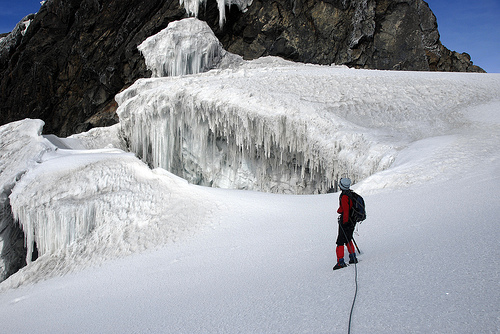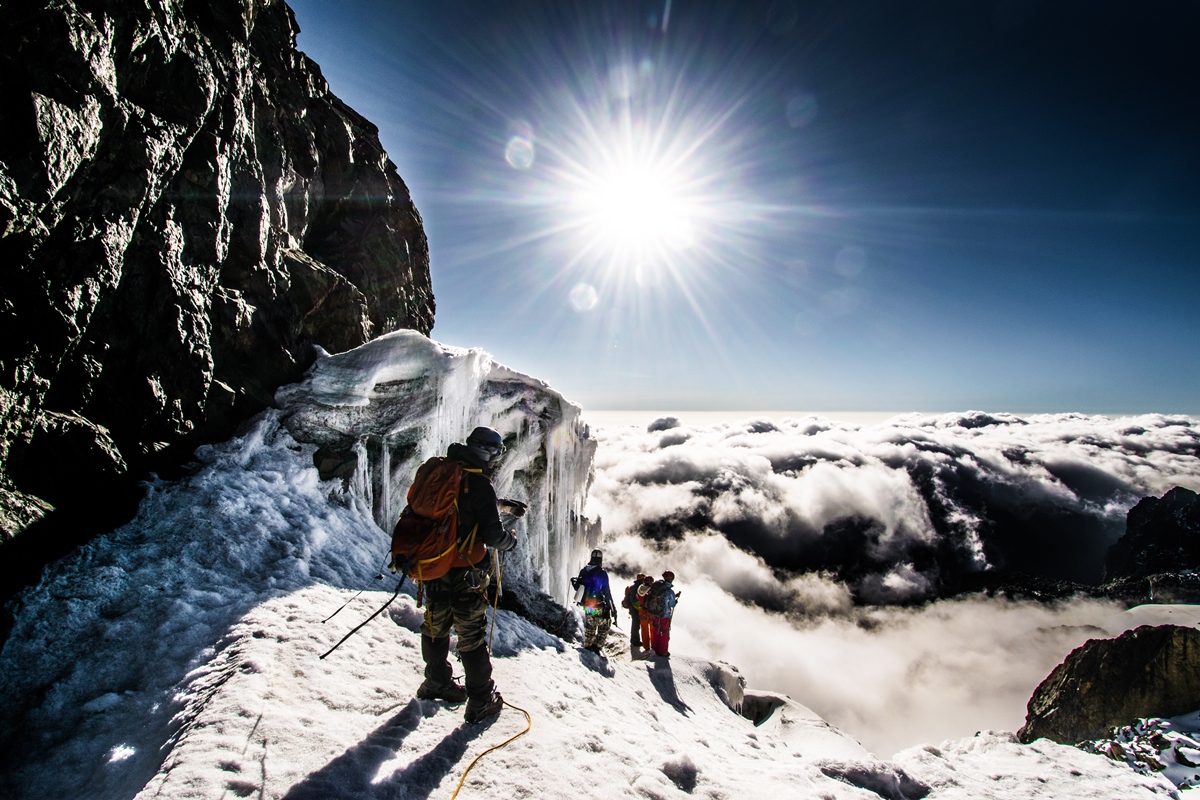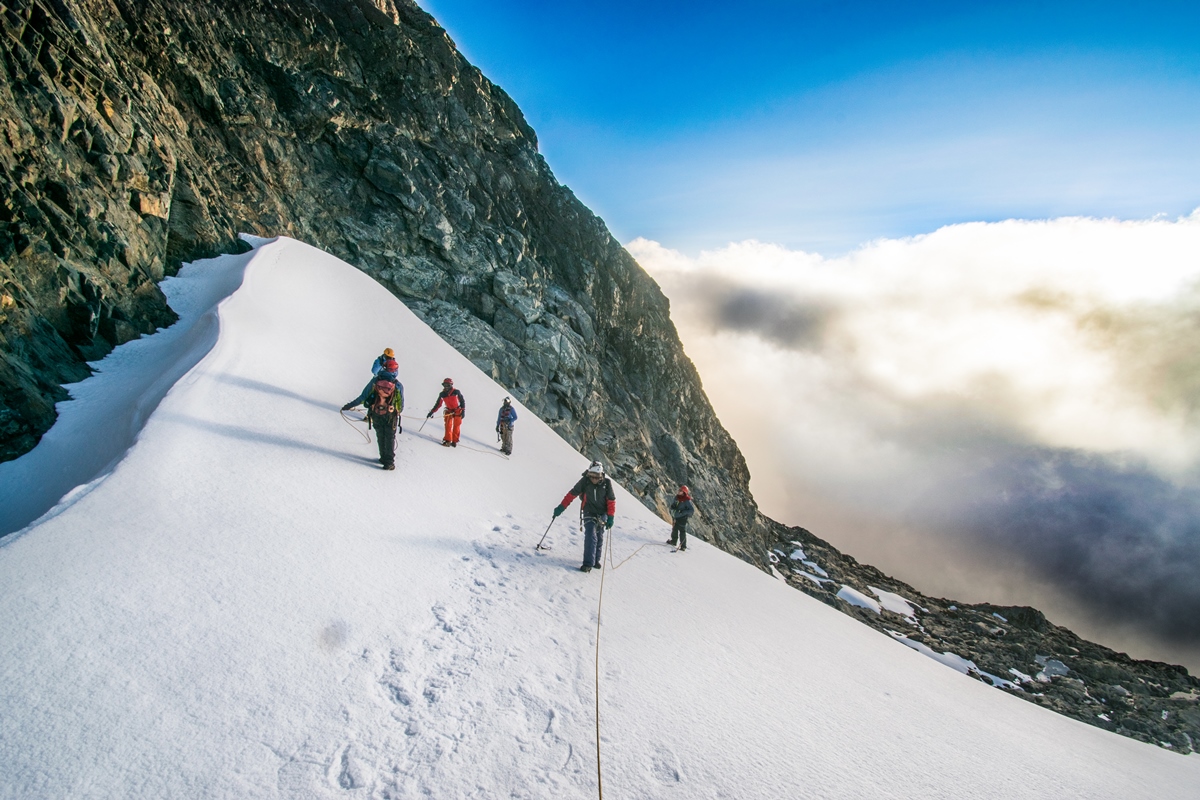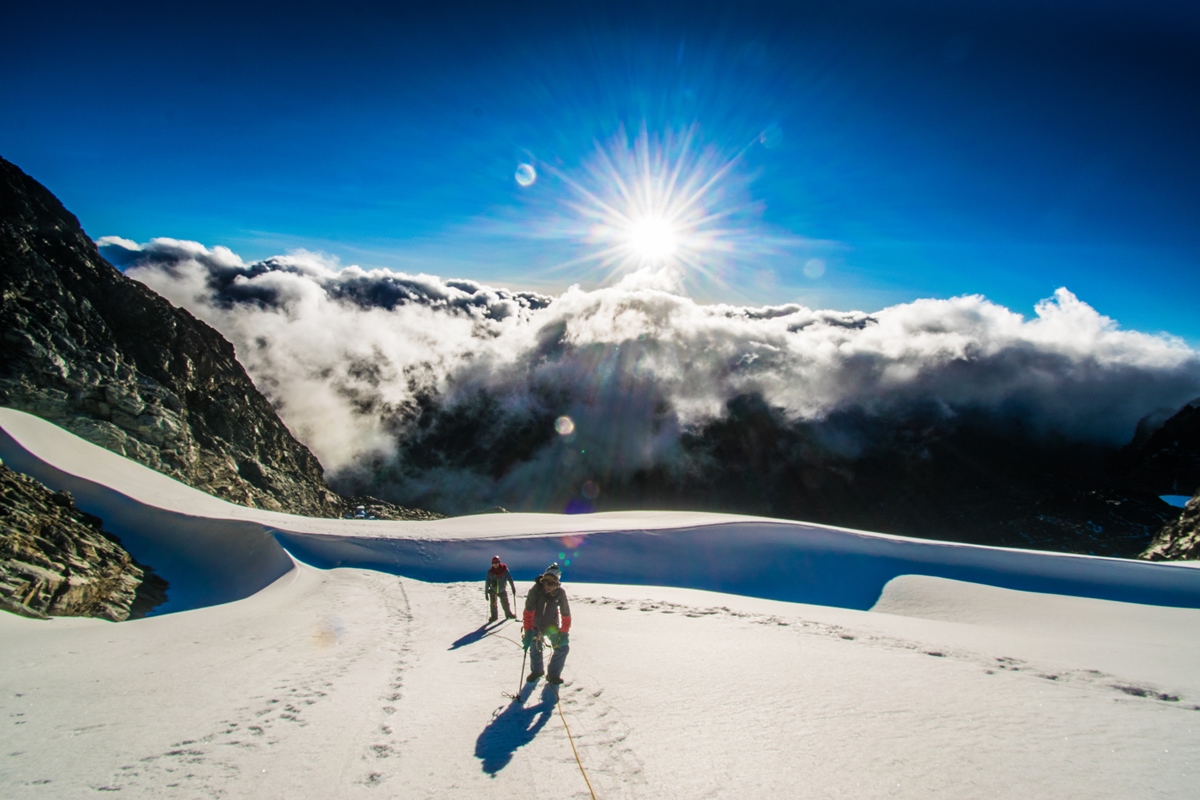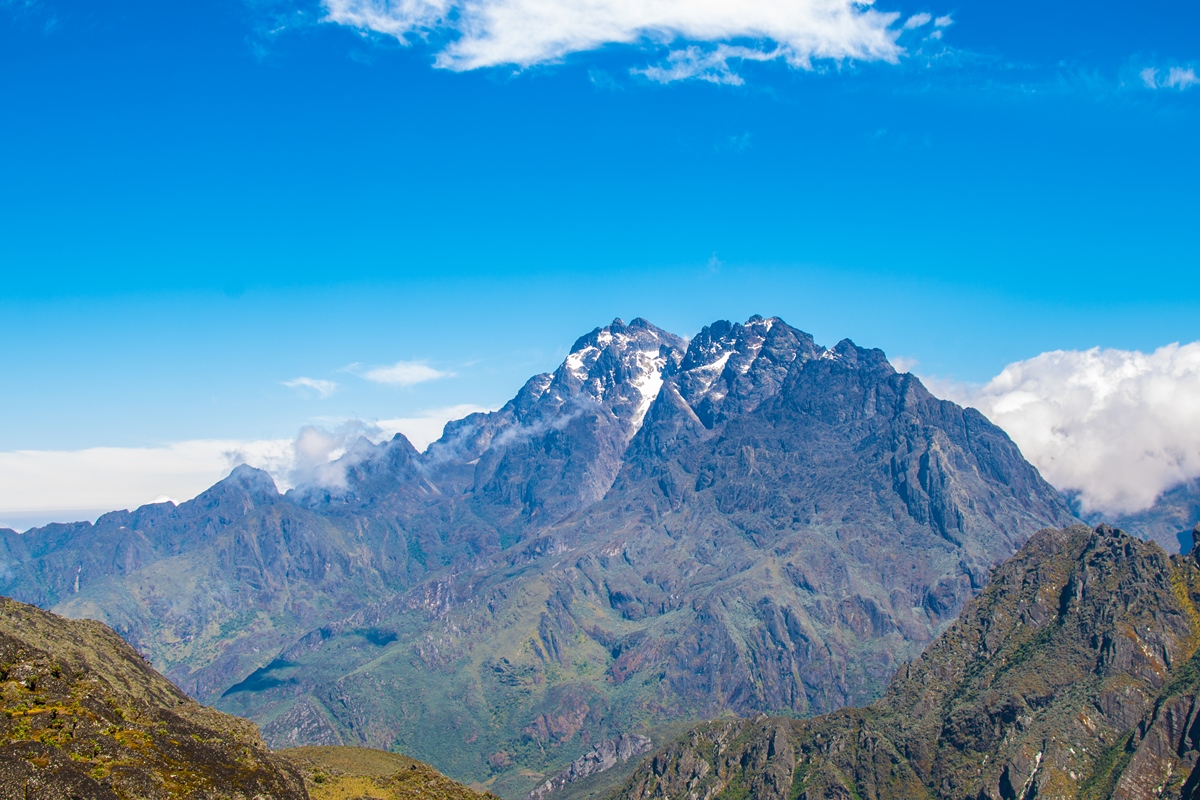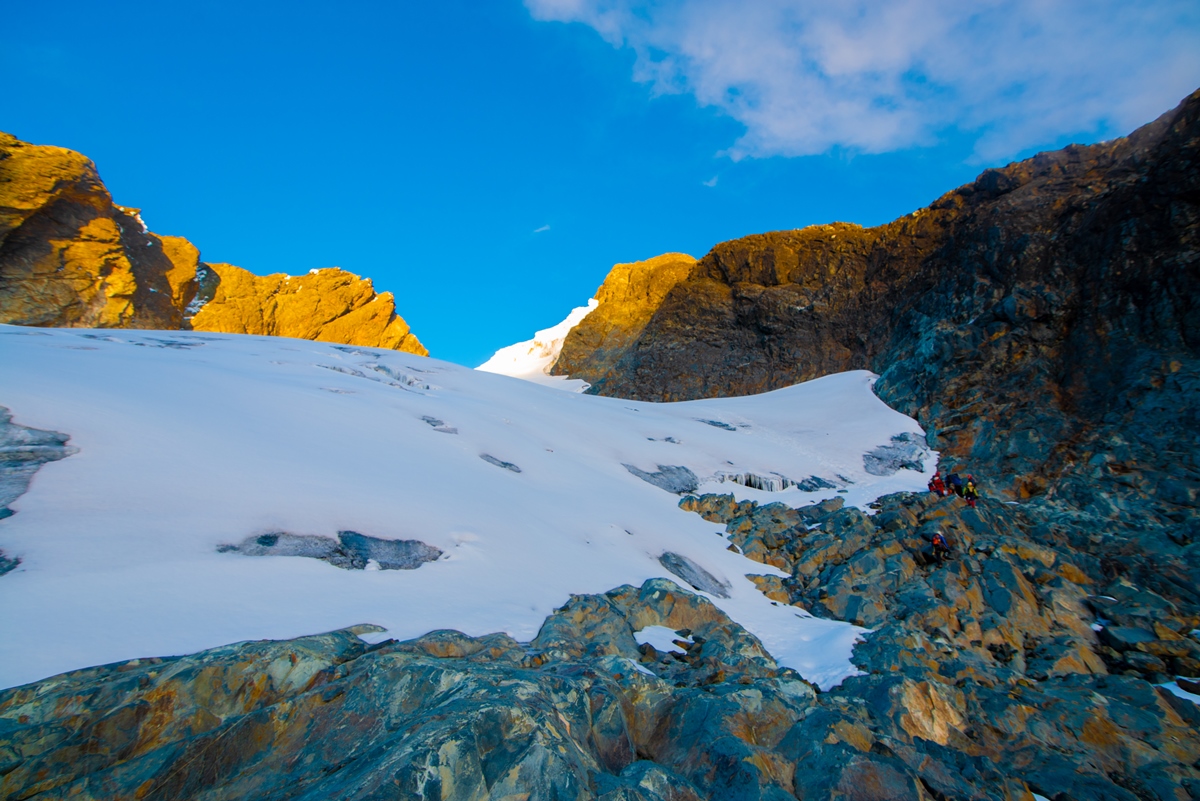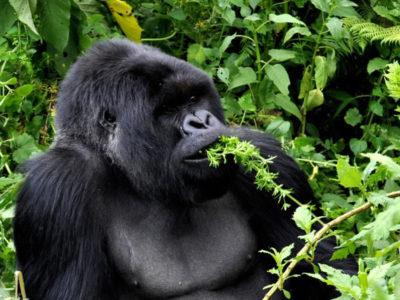Rwenzori Mountains National Park | National Parks, Uganda
The Rwenzori Mountains National Park– the fabled Mountains of the Moon – lie in western Uganda along the Uganda-Congo border. The equatorial snow peaks include the third highest point in Africa, while the lower slopes are blanketed in moorland, bamboo and rich, moist montane forest. Huge tree-heathers and colorful mosses are draped across the mountainside with giant lobelias and “everlasting flowers”, creating an enchanting, fairytale scene.
Rwenzori Mountains National Park protects the highest parts of the 120km-long and 65km-wide Rwenzori mountain range. The national park hosts 70 mammals and 217 bird species including 19 Albertine Rift endemics, as well as some of the world’s rarest vegetation.
The Rwenzori Mountains National Park are a world-class hiking and mountaineering destination. A nine- to twelve-day trek will get skilled climbers to the summit of Margherita – the highest peak – though shorter, non-technical treks are possible to scale the surrounding peaks.
For those who prefer something a little less strenuous, neighboring Bakonzo villages offer nature walks, homestead visits home cultural performances and accommodation, including home-cooked local cuisine.
Geography and Climate
Rwenzori Mountains National Park is located in southwestern Uganda on the east side of the western (Albertine) African rift valley. It lies along Uganda's border with the Democratic Republic of the Congo (DRC) and borders the DRC's Virunga National Park, also a UNESCO World Heritage Site, for 50 km. It is situated in the Bundibugyo, Kabarole, and Kasese districts, 25 km from the small town of Kasese. The park is 996 sq km in size, 70% of which exceeds an altitude of 2,500m above seas level. The park is 120 km long and 48 km wide.
The Rwenzori Mountains National Park straddle the equator along the border between Uganda and the Democratic Republic of Congo, extending north–south for about 110 km and east–west for about 50 km. Rising gradually from the highland plains of Uganda, the mountains fall steeply on the west to the Semliki River, the outflow of Lake Edward and a major tributary of Lake Albert, one of the sources of the White Nile. Geologically the mountains are young, created in the late Pliocene by an upthrust of crystalline rocks (mainly gneiss, amphibolite, granite and quartzite) that rose from within the western rift to divide palaeolakeObweruka and create present-day Lakes Albert and Edward. Hence, the range itself is not of volcanic origin although numerous craters (crater-lakes) of more recent age are found in the surrounding area.
The Rwenzori are wetter than other East African mountains, with annual rainfall varying with altitude from 2,000 to 3,000 mm, and being heaviest on the eastern slope, which faces the prevailing winds. On the Uganda side heavy rain can occur any time of year, but the rainiest periods are from mid-March to May and from September to mid-December. This therefore means those on Rwenzori Mountain National Park Hiking Safari should target the dry period of June to September. The equatorial position of the mountain range creates daily air temperature oscillations between −5°C and 20°C in the Alpine and Nival zones, an order of magnitude greater than the seasonal variation in maximum daytime temperature. Occasional night-time freezing occurs from 3,000 m altitude (the present-day boundary between Bamboo and Ericaceous zones); to 4,000 m (the Ericaceous–Alpine zone boundary) freezing occurs on 80–90% of the nights
BIODIVERSITY
The Rwenzori National Park, like other tropical mountains, have a range of exotic vegetation organized in discrete vegetation belts distributed across the altitudinal gradient. The montane forest zone extends from about 1,800 to (2,200) 2,400 m, and varies from dense forest (mainly confined to valley bottoms and ridge tops), through bracken or shrub dominated areas with scattered trees, to grassy glades. Common trees include Albizia spp., Dombeya spp., Olea spp., Podocarpusmilanjianus, Prunusafricana and Symphoniaglobulifera. The bamboo zone, which is dominated by Sinarundinariaalpina, reaches its upper limit at about 2,600 (2,800) m on the west and 3,000 m on the east side. The Ericaceous zone (Fig. 2a), extending from the end of the bamboo up to (3,800) 3,900 m, is characterised by broad-leaved trees (Hypericum spp. or St. John’s Wort, Hageniaabyssinica and Rapanearhododendroides), arborescent heathers (Erica spp.) draped with Usnea spp. (Old Man’s beard, a lichen), flowering shrubs (typically Helichrysumguilelmii), scattered tree groundsel (mostly Seneciolongeligulatus), and giant lobelias (chiefly Lobelia stuhlmannii). The dominant mosses are Breuteliastuhlmannii and Sphagnum spp.
Common plants in the Alpine zone include Carexrunssoroensis tussocks, as well as Helichrysumstuhlmannii (everlasting flower) and Alchemilla spp. (Ladies Mantle). Most celebrated in this zone are the so-called ‘giant rosette’ plants of the genera Senecio and Lobelia (primarily S. adnivalis, S. friesiorum and L. wollastonii), which are well-developed in ravines and other sheltered or well-watered sites. Almost all rock surfaces in the Nival zone, if not overlain by glaciers, are covered by lichens of the genera Umbilicaria and Usnea and mosses, such as Rhacocarpushumboldtii forming bright orange carpets.
Rwenzori National Park is exceptionally rich in endemics: it harbours at least 1 hawkmoth, 6 butterflies, 19 bird species and 12 small mammals that occur only here and/or in a few other highlands on either side of the Albertine Rift (including the Rwenzori hyrax Dendrohyraxarboreusruwenzorii and Rwenzori Leopard Pantherapradusruwenzori). Twelve species are on the IUCN Red List of Threatened Animals including the ‘vulnerable’ Moon striped Mouse (Hybomyslunaris), the ‘vulnerable’ Rwenzori Horse-shoe Bat (Rhinolophusruwenzori), the ‘near threatened’ Rwenzori Otter Shrew (Micropotomogaleruwenzori) and the ‘least concern’ Rwenzori Turaco (Ruwenzorornisjohnstoni)
Rwenzori Mountains National Park is home to 70 species of mammal, including six Albertine Rift endemics; 12 are endemic to the park and three are rare species. Other mammals include the elephant, chimpanzee, Rwenzori National Park otter and leopard. Though wildlife is difficult to spot in the dense forest, do look out for primates such as colobus (Angola and black-and-white varieties are both present) and blue monkeys; small antelope such as bushbucks; and unusual reptiles such as the three-horned chameleon.
Tourism
Rwenzori Mountains National Park is owned by the Ugandan government through Uganda National Parks. It is protected, although extraction may be sanctioned by a board of trustees. Kasese, 437 km west of Uganda's capital Kampala, is the gateway to the park. The town has hotels and lodges, while the park has camping, a good trail network and huts for hikers. The park has excellent trekking and climbing opportunities with spectacular views and unusual scenery. The major tourist activity here is mountain climbing although you are required to spend an overnight at the base of the mountain or in Kasese town.
For those who prefer something a little less strenuous, neighboring Bakonzo villages offer nature walks, homestead visits home cultural performances and accommodation, including home-cooked local cuisine.

